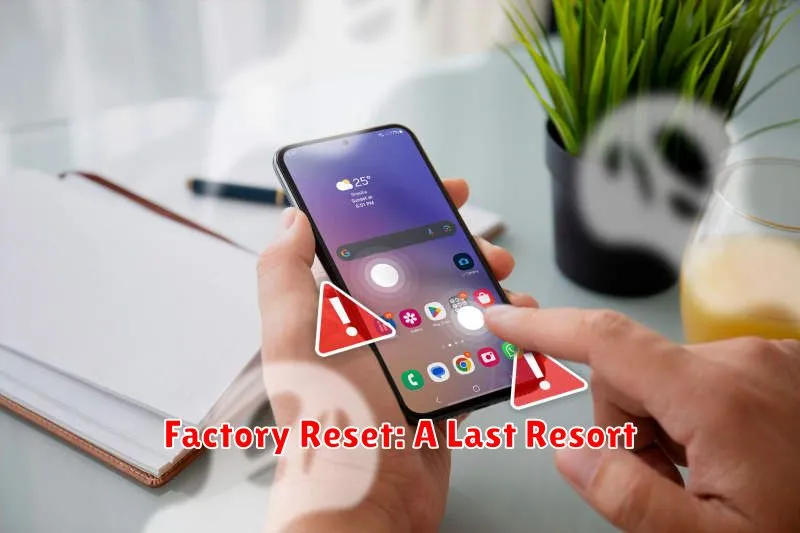Experiencing the frustration of ghost touches on your device? A misbehaving screen responding to phantom inputs can disrupt your workflow and make even simple tasks infuriating. Whether you’re dealing with a touchscreen phone, tablet, or other device, this article will provide effective fixes to banish ghost touches and restore your screen’s responsiveness. We will explore various troubleshooting methods, ranging from simple software solutions to identifying potential hardware issues, ultimately helping you regain control over your device.
From diagnosing the root cause of your ghost touch problem to implementing practical solutions, we will cover a comprehensive range of techniques. Learn how to differentiate between software glitches and hardware malfunctions that can lead to misbehaving screens. This guide will empower you to troubleshoot and potentially resolve ghost touch issues on your own, eliminating the need for costly repairs or replacements. Reclaim control over your touchscreen experience and say goodbye to the annoyance of ghost touches with these effective fixes.
Understanding Ghost Touch and Its Causes
Ghost touch, also known as phantom touch, describes the frustrating phenomenon where your touchscreen registers input without any physical contact. It can manifest as random taps, swipes, app openings, and even typing gibberish, making your device nearly unusable.
Several factors can contribute to this erratic behavior. A common cause is electrical interference. Nearby electronic devices, faulty chargers, or even environmental factors can disrupt the screen’s sensitivity. Software glitches within the operating system or specific apps can also trigger ghost touch. Furthermore, hardware problems like a damaged digitizer, loose internal connections, or a failing screen itself can be the root of the issue.
Understanding the potential causes is the first step towards effectively resolving ghost touch and regaining control of your device.
Common Culprits Behind Ghost Touch Issues
Several factors can contribute to ghost touch problems. Identifying the root cause is crucial for effective troubleshooting. Software glitches can sometimes interfere with the touchscreen’s normal operation. Similarly, incompatible apps or outdated software versions may cause conflicts leading to erratic behavior.
Hardware problems are another common source of ghost touch issues. A damaged screen protector, especially one with air bubbles or cracks, can disrupt the touch sensor’s ability to register input accurately. Loose internal connections within the device, possibly resulting from a drop or impact, can also cause phantom touches.
Environmental factors can also play a role. Extreme temperatures, both hot and cold, can affect the touchscreen’s responsiveness. Electromagnetic interference from nearby electronic devices might also trigger ghost touches.
Finally, a faulty charger or cable can sometimes introduce electrical noise that interferes with the touchscreen’s operation. Using a non-certified or damaged charging accessory can increase the likelihood of experiencing ghost touches.
Restart Your Device: A Simple First Step
Before diving into more complex troubleshooting, a simple restart can often resolve ghost touch issues. This process clears temporary software glitches that might be interfering with your touchscreen’s normal operation. Think of it as a quick refresh for your device’s system.
Restarting your device is straightforward. Typically, this involves holding down the power button until a menu appears, then selecting the restart option. If your device is completely unresponsive to touch, consult your device’s manual for specific instructions on how to force a restart.
After restarting, observe your screen for any recurring ghost touches. If the issue persists, proceed to the next troubleshooting steps.
Check for Physical Damage and Clean Your Screen
A damaged screen is a frequent cause of ghost touch issues. Carefully inspect your screen for any cracks, chips, or scratches, paying particular attention to the edges and corners. Even minor damage can disrupt the screen’s responsiveness and trigger phantom touches.
Dirt, grime, and fingerprints can also interfere with the screen’s ability to accurately register touch input. Clean your screen regularly using a soft, lint-free cloth. Slightly dampen the cloth with a screen-cleaning solution or distilled water if necessary. Avoid using harsh chemicals or abrasive materials, which could further damage the screen. Ensure your screen is completely dry before using your device again.
If you use a screen protector, check for any bubbles, peeling, or damage. A compromised screen protector can mimic the symptoms of a ghost touch. Replace it with a new one if necessary.
Update Your Software and Apps
Outdated software can sometimes harbor bugs that contribute to ghost touch problems. Ensuring your operating system (OS) and apps are up-to-date is a crucial step in troubleshooting. New updates often include bug fixes and performance improvements that can resolve touchscreen responsiveness issues.
To update your OS, navigate to your device’s settings menu. The exact location of the software update option varies depending on the operating system (e.g., Android or iOS). Look for terms like “System Updates,” “Software Update,” or similar.
For app updates, visit your device’s app store (e.g., Google Play Store, Apple App Store). Check for pending updates and install them. Keeping your apps current can help prevent conflicts and maintain optimal performance, potentially resolving ghost touch occurrences.
Test Your Charger and Cable
A faulty charger or cable can introduce electrical interference that mimics ghost touches. Disconnect your current charger and cable and try powering your device with a different, known-good set. Observe if the ghost touches persist. If the issue disappears, your original charger or cable is likely the culprit.
Inspect your cable for any visible damage such as fraying, bending, or exposed wires. These can disrupt the flow of electricity and cause problems. If you notice any damage, replace the cable immediately.
Similarly, examine your charger for any physical defects. Ensure it’s properly connected to the power outlet and that there are no signs of overheating or damage to the port. If you suspect a problem with the charger, replace it with a compatible and certified charger designed for your device.
Run a Diagnostic Test in Safe Mode
Safe mode is a diagnostic environment that disables third-party apps, allowing you to pinpoint whether a downloaded app is causing the ghost touch problem. By operating your device in safe mode, you create a controlled environment to test the screen’s responsiveness without potential interference from external applications. If the ghost touches cease in safe mode, a recently installed app is the likely culprit.
The method for entering safe mode varies depending on your device’s manufacturer and operating system. Consult your device’s documentation or perform a web search for instructions specific to your model. Once in safe mode, observe your screen for any ghost touches.
If the ghost touches disappear in safe mode, begin uninstalling recently downloaded apps one by one, restarting your device after each removal, until the problem is resolved. This process of elimination helps you identify the problematic app. If the issue persists even in safe mode, the problem likely stems from hardware or the operating system itself.
Factory Reset: A Last Resort

If all else fails, a factory reset can often eliminate ghost touch problems. This procedure erases all data and settings on your device, restoring it to its original factory state. It’s crucial to back up your important data before proceeding, as this action is irreversible.
The exact steps for performing a factory reset vary depending on your device. Consult your device’s user manual or manufacturer’s website for specific instructions. Typically, you’ll find the option within the device’s settings menu, usually under “System” or “Backup & Reset”.
After the reset, set up your device as new and observe its behavior. If the ghost touches persist even after a factory reset, it strongly indicates a hardware issue, and professional repair is likely necessary.
Seek Professional Repair if Necessary

If you’ve exhausted all troubleshooting steps and your screen is still experiencing ghost touches, it’s time to consider professional repair. This is especially important if the problem arose after a physical impact, like a drop or significant pressure on the screen.
Authorized service centers for your device’s manufacturer are the best option for repairs. They have access to genuine parts and trained technicians who can diagnose and fix complex hardware issues. Attempting DIY repairs on modern devices is strongly discouraged, as it can easily lead to further damage and void any existing warranty.
Before taking your device in, back up your data. While technicians take precautions to preserve data during repairs, there’s always a risk of data loss. Having a backup ensures you can quickly restore your information after the repair is complete.
Request a detailed cost estimate before authorizing any repairs. This will help you avoid unexpected expenses and allow you to compare pricing if you’re considering multiple repair options.
Prevention is Key: Safeguarding Against Future Ghost Touches
While troubleshooting can resolve existing ghost touch issues, proactive measures can significantly reduce their likelihood. Protecting your device from physical stressors and maintaining its software are crucial for preventing future problems.
Use a high-quality screen protector: This acts as a buffer against scratches and impacts that can contribute to ghost touch issues. Ensure the protector is compatible with your device and installed correctly to avoid trapping debris or creating air bubbles.
Invest in a protective case: A sturdy case safeguards your device from drops and bumps, minimizing the risk of internal damage that could lead to screen malfunctions. Choose a case that offers adequate protection for your device’s corners and edges.
Keep your device clean: Regularly clean your screen with a soft, lint-free cloth to remove dust, fingerprints, and other residues that can interfere with touch sensitivity. Avoid using abrasive cleaners or excessive pressure.
Maintain stable temperatures: Extreme temperatures, both hot and cold, can negatively impact your device’s performance, including its touchscreen. Avoid leaving your device in direct sunlight or extremely cold environments.
Charge responsibly: Use only the manufacturer’s recommended charger and cable. Incompatible or faulty charging accessories can introduce electrical fluctuations that damage the screen or other internal components.

